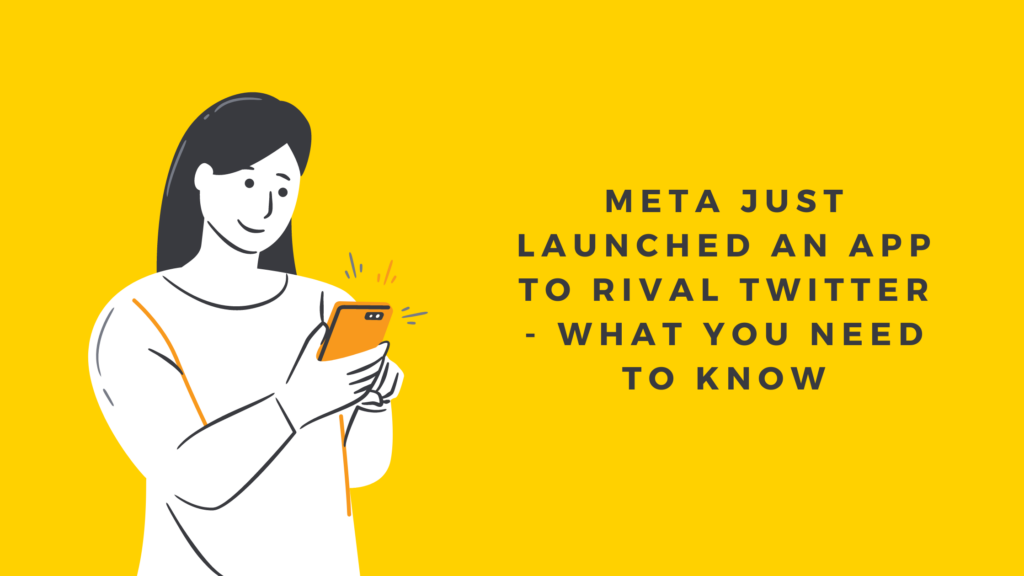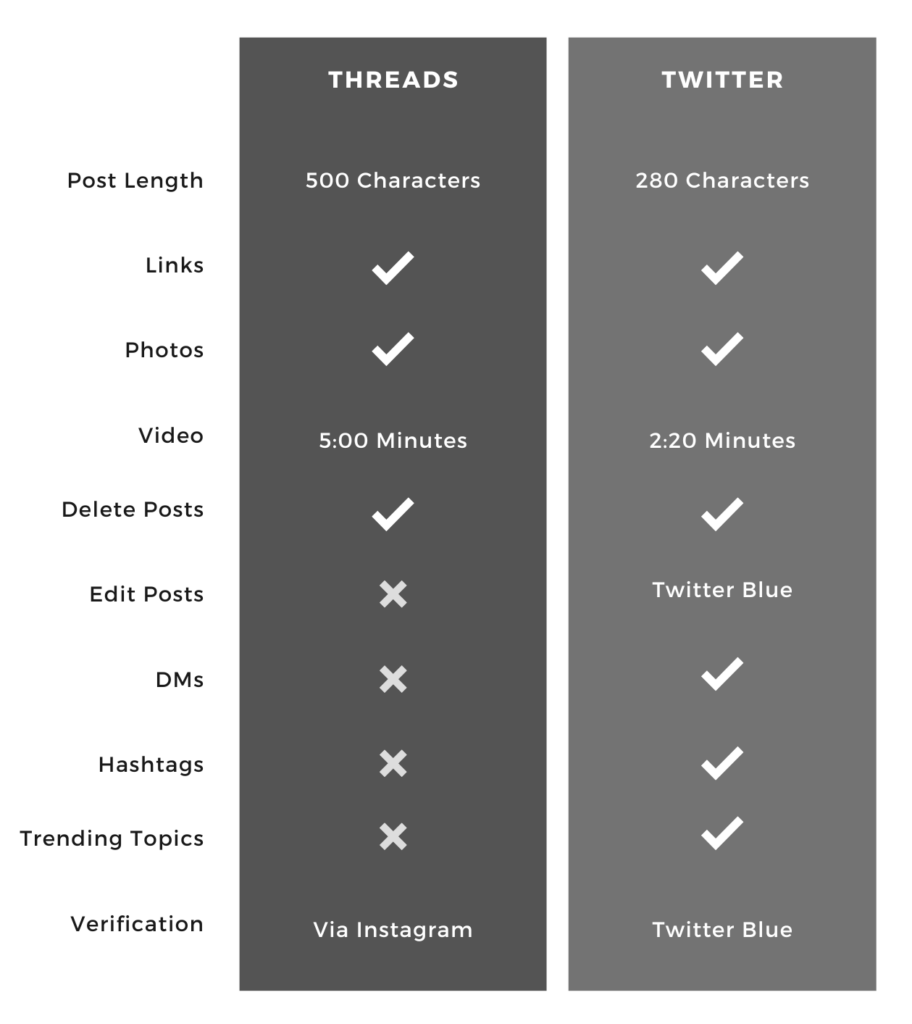
Twitter has had no shortage of interesting decision making recently. From a rocky Twitter Blue rollout, to more recent rate limitations preventing users from even being able to view tweets, it’s the perfect time for a competitor to strike while the iron is hot and take advantage of a frustrated user base.
In comes Threads, Meta’s answer to Twitter users’ woes, served up on a silver platter. Over less than two full days, Threads went from a seemingly unknown app to a bustling new social platform, with more than 70 million registrations as of Friday morning. But what exactly is Threads, what are the similarities and differences to Twitter, and should organizations be rushing to form social media strategy plans for this shiny new app?
Unveiled to the public on July 5, Threads can be most simply described as Meta’s clone of Twitter. Meta is no stranger to copying popular app functions, from introducing Instagram Stories to mirror Snapchat in 2016, to emulating TikTok with the creation of Reels in 2020.
Like Twitter, users on Threads can create text, image and shortform video posts. Other users can react with these posts by liking, replying, reposting or even sharing threads to a variety of other platforms.
Users log into Threads with their existing Instagram account, so there’s no need for companies and organizations to rush to claim their usernames on the new platform. In addition, when signing up, users can choose to follow any of their Instagram following list who are currently on Threads, and auto-follow anyone on their following list who joins Threads after them.
On day three of Threads, there are currently some key differences and similarities between the platform and Twitter:

As the app exists today, let’s take a look at the pros and cons of Threads for users and organizations:
Pros:
- 500 character limit – Right out the gate, Threads nearly doubles the maximum amount of text users are allowed to share on Twitter (Twitter Blue users can share tweets up to 10,000 characters in length). It’s a happy balance that allows people to share a full thought in a single post without clogging the feed with full essays.
- Early established userbase – unlike other want-to-be-twitter clones, Threads benefits from Instagram’s 450 million active monthly users – with tens of millions already using the app.
- A head start for Instagram stars – By providing the option for new users to automatically follow the same profiles they are following on Instagram, threads users with large Instagram followings benefit from a carry-over audience, rather than having to start completely from scratch.
- (For some) No ads – A pro for users, and a potential challenge for marketers looking to take a more targeted approach to reaching their desired audience. So far, Meta hasn’t built Threads ads into their Business Suite.
Cons:
- No chronological/follow-only feed – New users to the app may be overwhelmed and confused by the Threads feed. Right now, it’s a combination of suggested threads posts from big accounts, accounts users follow, as well as the accounts those followed users interact with. In the early stages, it’s tricky for users to curate their feeds. However, Instagram Head Adam Mosseri has shared that chronological and follow-only feeds are one of the many upcoming features the Threads team is working on.
- No hashtags/low discoverability – Bad news for small accounts looking to build an audience. As of now, the only search function available is to search for usernames – that means no hashtags, keyword searches or trending topics to help to get your profile noticed. Without ads, it’s going to be difficult for accounts with low follow accounts to be heard above the crowd.
- No API access/analytics – A real hurdle for marketers and organizations looking to streamline management of posts and to determine ROI. As of right now, no native scheduling system, or third party scheduling, is available for the Threads platform. If you want to post and keep track of interactions, you’re going to have to manage that all in real-time.
Should my company/organization be on Threads?
That depends.
As it stands, with no hashtag, keyword search or trending topics available, discoverability will be a big challenge for organizations who aren’t already carrying over a sizeable following from Instagram. For the Wendy’s and the WWFs of the world, it’s an obvious answer. But for the highly specialized B2B companies, or the local nonprofits with smaller, focused followings, it may be worth considering whether the time and manpower will have a reasonable ROI in the fledgling stages of the Threads platform.
Overall, Threads came out of the gate with a bang, but time will tell if it manages to retain and grow an enthusiastic userbase, and whether the platform will develop features and functionality to catch up to what is currently available on Twitter.

